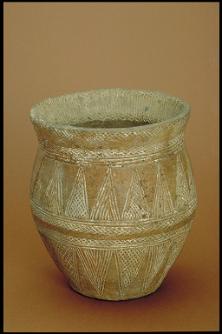The fascinating story of some people who lived in the North and North-east of Scotland around 4,000 years ago is set to be uncovered in a new programme by Channel 4's The Bone Detectives later this year.
The programme will feature items from the University of Aberdeen’s museum collection, which has what has been described as Europe’s best curated collection relating to these people, including some 80 skeletons and objects with which they were buried.
The ‘Beaker People’, as they have been called, are known as such because they were buried with distinctive pots known as Beakers. Studies show that the Beaker People lived between 2400 and 1800 BC, and were part of a phenomenon spread across the European continent.
The programme will feature the skeleton of a woman whose bones were found in a grave cut into solid bedrock at Achavanich in Caithness in 1987. Known as ‘Ava’, modern DNA research techniques showed that she was descended from European migrants who arrived in Britain a few generations before she was born. Her remains were found alongside a Beaker, among other things.
She will be compared with a man whose burial was found on the farm of Newlands, near Oyne in Aberdeenshire, which is now in the care of the University’s museum collections. As well as a Beaker, he was buried with an item which has been identified as an archer’s wrist-guard, while the programme will also show a set of mint-condition flint arrowheads found in a burial from Borrowstone Farm near Aberdeen.
The University’s Head of Museums and Special Collections Neil Curtis said that there were various reasons for the University having such an important collection associated with the Beaker people.
“The main reason is that the North-east of Scotland was one the areas that had very strong connections with the European Beaker phenomenon 4,000 years ago. On top of that, their burial in stone cists protected them for thousands of years, until they were discovered by farming, road and house building since the nineteenth century. Finally, the strong links between the University’s medical school and its museum meant that anatomists were well-placed to collect, study and curate the skeletons and other finds.”
In recent years, the University Museum’s Leverhulme Trust ‘Beakers and Bodies Project’ has radiocarbon-dated almost all the skeletons from the North-east of Scotland and made various discoveries, including identifying a particular style of Beaker found only in Buchan, and that most of the Beakers had originally had their decoration enhanced with a white paste made from burnt bones.
The programme will show a selection of Beakers and other items from the University collection, including some of Scotland’s earliest bronze tools and moulds used for making bronze axes. It will also discuss new studies of ancient DNA that suggest that the ancestors of the people buried with Beakers in Scotland were part of a major migration across Europe.
The Bone Detectives is expected to air during the summer.


